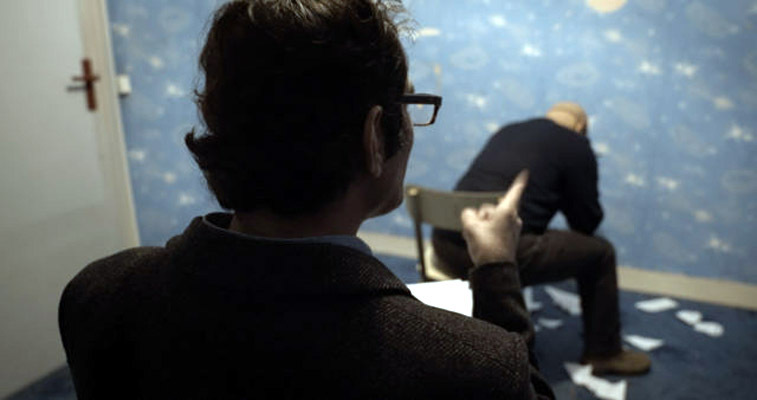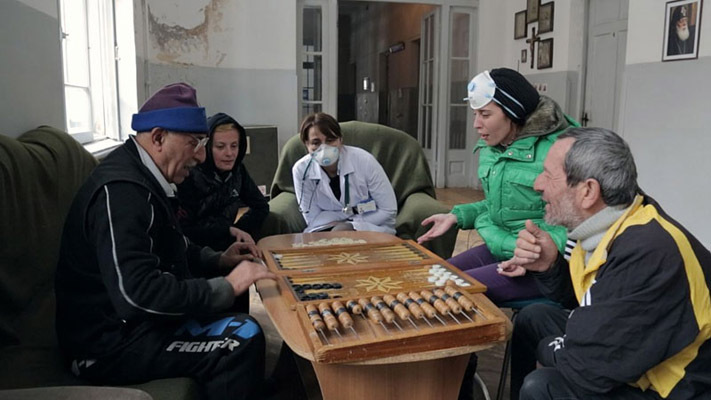Displacement, Oppression, Conflict and War
Wanda Bendjelloul takes a look at the Documentary entries that focused on displacement, conflict and oppression – at a distance and up close, and with all the various cultural nuances intact.
The Golden Apricot – Yerevan International Film Festival celebrated its 20th year as a festival by both looking back and firmly being in the present. The screenings began with an accompanying animated film presenting all the prominent guests over the years, from Iranian filmmaker Asghar Farhadi to French director Claire Denis. As for the present, this year’s guests were the Philippine director Lav Diaz, Kazakh director Sergei Dvortsevoy, Japanese director Takeshi Kitano, and the French directors the Dardenne brothers: A selection of films from each filmmaker were screened and the audience were also treated to Q&As afterwards. Furthermore, some films screened at other festivals this year like Aki Kaurismäkis heartwarming Fallen Leaves (Kuolleet lehdet) and the Cannes winner Anatomy of a Fall (Anatomie d’une chute) by Justine Triet were also programmed. The opening film was Jessica Woodworth’s black and white sci-fi drama, Luka; an Armenian-Belgian co-production with Armenian cast members.
As for the films in the selection considered for the Fipresci prize, the films were regional, in this case Georgian, Armenian and Iranian. Out of the ten nominated films, only two were feature films; the Iranian entry Endless Borders, by Abbas Amini, and the Georgian entry The Drummer, by Kote Kalandadze. The rest were documentaries tackling the greater challenges of our time, especially acute in the Caucasus region, such as displacement, oppression, conflict and war. The most interesting example of this was of course the film we chose as our winner, the Iranian semi-documentary My Worst Enemy (Mon pire ennemi) by Mehran Tamadon.
But more about that in a moment, as it’s not possible to give out more than one prize. Therefore, a special mention here goes to the second most interesting film in this category: the Georgian documentary Magic Mountain (Jadosnuri Mta) by Mariam Chachia, which won the Regional Panorama award. It is set in a tuberculosis clinic, Abastumani, in a remote mountain area of Georgia. It was once the palace of the Romanov family but has since become a run-down institution with patients living there for months on end waiting to be cured. As the filmmaker herself, Mariam Chachia, recovers from the disease she is haunted by the idea of this isolated place in the forest and the people living there. The film is a suggestive essay about loss of agency and a monument of the country’s historic past. The film differs from the rest of the documentaries represented in this category as it has an omnipresent messenger. Chachia, having suffered from tuberculosis herself, knows the nature of this gruesome disease and naturally interacts with the patients as they have a shared experience.
In contrast to Magic Mountain many of the other films in competition were more waged and distanced from their subject matter. Daniel Kötter tells his story about the people living around the Sotk mine in the aftermath of the 2020 Karabakh war in wide frame. Silva Khnkanosian tells her story in Far From Michigan from the bomb shelters in Stepanakert by using subtitles instead of voice over.
While participating in the FIPRESCI jury at the Odessa Film festival in 2019 there was already a war going on in the Eastern part of the country, which unsurprisingly became the dominating theme of the films at that festival. In the case of the Golden Apricot the dominating topic of the Armenian films in competition was the conflict between Armenia and Azerbaijan surrounding Nagorno Karabach that has been going on since 1988. The last big outbreak was in 2022. All three Armenian films in competition were about this conflict. As for the winner there was a great sense of avant-garde filmmaking and unconventional storytelling which had an approach on the verge of being perhaps too provocative. My Worst Enemy keeps pushing buttons and asking difficult moral questions as it evolves. What is the responsibility of the filmmaker towards himself, his actors and the audience? Where does the line between fiction and documentary go? As the film progresses all of this becomes even more unclear. Therefore, if some of the films in competition were too impersonal and somewhat generic perhaps this film was too personal. Iranian filmmaker Mehran Tamadon declares at the beginning of the film that he wants to make a reenactment of the interrogation he had to endure after being arrested in Iran. He is now living in Europe but has a vision of going back to his homeland and show the film to his interrogator, although it seems impossible. He then looks for someone to play the character of the interrogator among his compatriots abroad. Many turn him down saying they are uncomfortable being part of the experiment. At last the Iranian actress Zar Amir Ebrahimi accepts the part. They lock themselves in an apartment and start the interrogation. The moment Zar Amir Ebrahimi enters the screen she becomes dark matter. The film totally shifts from an intellectual idea to a sort of exorcism with the intention to expel haunting memories of humiliation for both of them. Amir Ebrahimi’s persistent questions and insinuations soon get under your skin as an audience. Her ability to twist everything Tamadon says results in total confusion. How far is she willing to go? The pure uncertainty of the experiment breeds an unease that somewhat transfers the sense of madness the one being interrogated suffers. Both the director and actor are so believable that you as an audience start to worry about the outcome. This unorthodox approach to the subject matter and the harrowing feeling it leaves behind is absolutely its strongest feature.
Wanda Bendjelloul
Edited by Steven Yates
© FIPRESCI 2023


